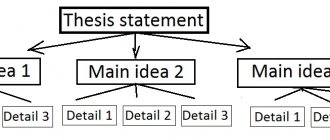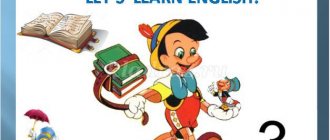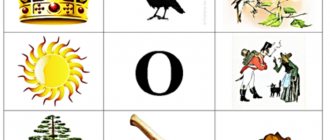What is fishbone
The fishbone method (from the English fishbone method) is translated as “fish skeleton” or “fish bone”. It received this name for the appearance of the diagram, which is similar to the skeleton of a fish. This is a simplified view of a diagram by Ishikawa, a Japanese scholar who worked on critical thinking.
Fishbone develops in children the ability to think critically through a visual and meaningful form, therefore it is widely used in many lessons. In addition, with this technique, students:
- acquire skills of working in pairs and groups;
- trace cause-and-effect relationships;
- determine the significance of various factors and rank them;
- learn to evaluate the phenomena of the surrounding world.
“Fish Skeleton” allows you not only to organize data and efficiently process information for memorization, but will also help you find a solution to any problem. This technique is often used for brainstorming.
Fishbone - visualization of cause-and-effect relationships
One teaching technique that can be used in groups is the Fishbone . It is literally translated from English as “Fish Skeleton” or “Fish Skeleton” and is aimed at developing students’ critical thinking in a visual and meaningful form.
The essence of this methodological technique is to establish cause-and-effect relationships between the object of analysis and the factors influencing it, and to make an informed choice. Additionally, the method allows you to develop skills in working with information and the ability to pose and solve problems.
What is Fishbone?
Fishbone Method Fishbone
is based on a schematic diagram in the shape of a fish skeleton. Such a diagram is widely known under the name of Ishikawa (Ishikawa) , a Japanese professor who invented the method of structural analysis of cause-and-effect relationships.
Fishbone circuits allow you to:
- organize the work of participants in pairs or groups;
- develop critical thinking;
- visualize the relationships between causes and effects;
- rank factors according to their importance.
With the help of a diagram, you can find a solution to any complex situation under consideration, and new ideas arise each time. It will be effective to use during brainstorming.
Depending on the age category of the students, the wishes and imagination of the teacher, the diagram can have a horizontal or vertical appearance. For primary school age, a more natural fish shape is suitable - horizontal.
The diagram includes the main four blocks, presented in the form of a head, tail, upper and lower bones. The connecting link is the main bone or spine of the fish.
- Head - a problem, question or topic that is subject to analysis.
- The upper bones (located on the right when the diagram is vertical or at an angle of 45 degrees from above when horizontal) - the basic concepts of the topic and the reasons that led to the problem are recorded on them.
- The lower bones (shown opposite) are facts confirming the presence of the stated reasons, or the essence of the concepts indicated in the diagram.
- The tail is the answer to the question posed, conclusions, generalizations.
The Fishbone technique involves ranking concepts, so the most important ones for solving the main problem are located closer to the head. All entries must be short, precise, concise and reflect only the essence of the concepts.
Application of the Fishbone method in the classroom
The Fishbone scheme can be used as a separately applied method to analyze a situation, or act as a strategy for an entire lesson. It is most effective to use it during a lesson in generalizing and systematizing knowledge, when the material on the topic has already been covered and it is necessary to bring all the studied concepts into a coherent system that provides for the disclosure and assimilation of connections and relationships between its elements.
Forms of work in the lesson:
- Individual work . All students are given the same text for analysis and each is given a goal - to complete the “Fishbone” diagram within 10 minutes. Then there is a discussion of the results, an exchange of opinions and filling out a general diagram on the board.
- Work in groups . Each group receives its own text. The text is read individually and discussed in groups. Fishbone's general outline is completed based on the groups' opinions.
The Fishbone pattern can be drawn up in advance. With the use of technical means, you can use ready-made templates.
Go to example
In their absence, use ordinary Whatman paper or the teacher’s daily tool - colored chalk.
Additionally:
- https://pedsovet.su/metodika/priemy/5714
Using the fishbone method in the classroom
The fishbone technique is so versatile that it can be used in any type of lesson. But it will be more effective in lessons of generalization and systematization of knowledge. This way, students will be able to systematize all the information received, trace the relationships between the components and facts of the diagram, and also eliminate gaps in knowledge.
It is important to teach children to present the results of such work and explain their point of view. While it is easy for most students to make assumptions on various issues, difficulties often arise with searching for and presenting arguments and facts. In everyday life, too, not everything can be confirmed, so it’s not scary if the lower part of the fish’s skeleton remains empty.
Particular attention should be paid to the tail of the fish so that all the work done has a result. If children find it difficult, the teacher can help draw a conclusion. And in the lower grades, when students are still learning how to fill a fishbone, you can offer a ready-made version of the tail.
Examples of using fishbone technology in the classroom
Using fishbone technology in the classroom allows you to develop the ability to analyze information, highlight the main thing, look for the causes of phenomena, establish connections between them, and also work in pairs and groups.
The most successful use of the “fish skeleton” will be in history and literature lessons. In a creative form you can analyze the most complex topics. To better understand what a fishbone is, let's look at examples.
At a history lesson
In the 6th grade, during a history lesson, students examine a complex topic: “Feudal fragmentation in Rus'.” To better understand the concept and reasons for the collapse of Ancient Rus', children make up a fishbone.
Head (phenomenon) – the reasons for the collapse of Ancient Rus'.
Top bones (reasons) – there was no order of succession to the throne; the territories differed greatly in natural and economic conditions; natural economy; growth and development of cities.
Methods and techniques of critical thinking technology in the classroom. - presentation
Methods and techniques of critical thinking technology in the classroom
Technology of critical thinking based on reading and writing This technology distinguishes three main stages: I. Challenge - awakening existing knowledge, interest in the information received, updating life experience. II. Understanding the content (obtaining new information). III. Reflection (comprehension, the birth of new knowledge).
Methods and techniques of critical thinking technology brainstorming technique “basket of ideas, concepts, names” syncwine method cluster, RAFT technologies, ZHU technique, POPS - formula, method of thick and thin questions fishbone method Insert RAFT technology conceptual and terminological map “True and False” statements” or “do you believe” Technique “Reading with stops” and drawing up a “forecast tree”, etc.
Brainstorming Usually brainstorming is carried out in groups of 7-9 students 1. Creating a bank of ideas. The goal is to develop as many solutions as possible. 2. Analysis of ideas. Find something useful and rational in every idea. 3. Processing of results. The group selects 2-5 of the most interesting solutions and appoints a speaker who tells the class about them
Examples: Stairs, especially stone-cement ones, are very dangerous in icy conditions. Offer ideas to reduce injuries. Ice is the cause of a huge number of car accidents. Suggest ways to reduce accidents.
“True and false statements” or “do you believe”
BASKET OF IDEAS, CONCEPTS, NAMES Topic: Human rights What do you know about this topic? Human rights are those rights that are inherent in our nature and without which we today cannot live as civilized people.
Cluster Cluster (bunch): involves the selection of semantic units of text and its graphic design in the form of a cluster. It is important in the text you are working with: 1. Highlight the main semantic unit in the form of a keyword or phrase (topic). 2.Identify semantic units (categories of information) associated with the keyword. 3.Specify the categories with opinions and facts contained in the information being mastered.
Keyword Category 1 Category 4 Category 3 Category 2 Cluster
Fishbone Fishbone (fish skeleton): head - the question of the topic, the upper bones - the main concepts of the topic, the lower bones - the essence of the concepts, the tail - the answer to the question. Entries should be brief and contain key words or phrases that capture the essence.
Reception "Fishbone" ("Fish bone") Problem: Conclusions: Reason: facts:
Fishbone in a history lesson in the 6th grade Topic “Feudal fragmentation in Rus' Causes of the collapse of Ancient Rus' Differences in territories according to natural and economic conditions Subsistence economy Strengthening the economic power of individual lands There are no close trade ties between the principalities Fragmentation in Rus' was inevitable The order of inheritance of the Kiev was not determined throne Internecine wars and the struggle for the throne of Kiev Growth and development of cities Cities do not want to obey Kyiv, they strive for independence
SWOT - analysis Strengths strengths Strengths strengths Weaknesses weaknesses Threats threats Opportunities Opportunities Topic/concept/fact
SWOT - analysis in an economics lesson in grade 9 Topic “Types of economic systems” - efficient allocation of resources; -stimulates scientific and technical progress; - creates a material interest in producing what is needed - efficient distribution of resources; -stimulates scientific and technical progress; - creates a material interest in producing what is needed - creates social inequality; - does not solve socio-economic problems (inflation, unemployment) - sectors such as housing and communal services are not developed. As a result of social inequality, the following are possible: social upheavals in society; Decrease in the level of provision of citizens with public goods; A market economy will not be able to quickly overcome the crisis without government intervention - free choice of suppliers, raw materials, goods, etc.; — variety of forms of ownership; — free competition; -use of the most effective technologies; -independence of producers Market economy
Thick and thin questions. ( Thick question: Thin question who... what... when... maybe... will... could... what was the name... was... do you agree... right... give an explanation why... why do you think... why do you think... what's the difference... guess what will happen if... what if...
Reception ZHU “I Know – I Want to Know – I Found Out” (Z – X – U) I Know I Want to Know I Learned They write down what they already know about this issue, group the proposed ideas and categories Controversial ideas and questions. Then the text is read and answers to the questions are found. Write down what students learned from the text. The answers are located parallel to the questions in the second column.
“Addition, subtraction of ordinary fractions”
“Insert” technique Insert is marking text with icons as it is read. interactive interactive noting marking system effective for effective reading and thinking.
“Insert” technique Icons for marking text: “V” - already knew; +- new; - thought differently; ? - I don’t understand, I have questions. This technique can be used when working with the text of a historical source.
“Insert” technique 1. While reading, the student makes notes in the text: V - already knew, + - new, - - thought differently, ? – I don’t understand, I have questions. 2. Reading the second time, fills out the table, systematizing the material. 3. Consecutive discussion of each column of the table.
RAFT technology. - R (role. On behalf of whom will the message be presented?) - A (audience. For whom?) - F (form. In what form will the message material be presented?) - T (topic. What will be discussed in the message?). For example: R (role) – journalist. A (audience) – 6th grade students. F (form) – TV show, essay, article. T (topic).
“Visitors of Ilya Ilyich Oblomov” (based on the novel “Oblomov” by I.A. Goncharov). 1. You need to start, of course, with the topic. Then we move on to choosing a role. This is a very important stage. We don’t just choose a role, but try to transform into the character, to feel it. Do not forget that you will have to look for that method of verbal influence that allows you to embody a given character and make it recognizable. Each character’s speech is special, having its own vocabulary, its own structure. You need to think about who this hero could turn to? That is, choose an audience (addressee) and think about the form, that is, in what genre the hero could address the selected audience. 2. Roles: Volkov, Sudbinsky, Penkin, Alekseev – Vasiliev – Andreev, Tarantiev. 3. Audience - a random fellow traveler, Zakhar, Stolz, Olga Ilyinskaya, headman of Oblomovka. 4. Form: monologue, letter, suffering, ditties, memo, statement (or other form proposed independently)
Conceptual and terminological map. Concepts and terms are written out on the board in a chaotic order and everything must be put together in a logical chain according to the topic.
Receiving POPS - Position formula. "I believe that…". Rationale. "Because…". Confirmation. “This idea is confirmed by words from the text...; “I can confirm this...” Consequence. "Hence…". The conclusion should not contradict the first statement, but may repeat it in some way.
“Metabolism and energy in the cell” “Metabolic disorders often lead to excess weight. Weight loss diets are very popular among women and girls. It has been established that a sharp change in the type of food for a short period of time gives a short-term effect, slowing down metabolism and increasing appetite. Usually, after diets, body weight is quickly restored, and sometimes even exceeds the original.” Position. "I believe that…". Rationale. "Because…". Confirmation. “This idea is confirmed by words from the text...; “I can confirm this...” Consequence. "Hence…".
Cinquain Cinquain (pentatine) is an unrhymed poem consisting of five lines, used as a didactic device at the reflection stage. 1. the first line is the theme of the poem, expressed in one word, usually a noun; 2. second line – description of the topic in two words, usually using adjectives; 3. third line – description of the action within this topic in three words, usually verbs; 4. fourth line – a four-word phrase expressing the author’s attitude to this topic; 5. fifth line - one word - a synonym for the first, repeating the essence of the topic on an emotional-figurative or philosophical-general level.
Cinquain Man of the Renaissance Man Almighty, Godlike Creates, Admires, Sings The crown of creation is the measure of all things Titan Russia in the years Tsarist Russia, autocratic Russia fights, suppresses, overthrows the era of world war, revolution, civil unrest shift in Russian society Wealth Material, intangible wealth to receive , win, earn wealth - water, came and went Abundance
Stage “Reflection” Table of PMI – disadvantages, advantages, prospects P – “plus”, positive features, advantages M – “minus”, negative features, disadvantages I – “interesting”, opportunities for development of PMI
Stage “Reflection” PMI table – shortcomings, advantages, prospects P – “plus”, positive features, advantages M – “minus”, negative features, shortcomings I – “interesting”, opportunities for development P It was interesting to work in a group to create a small project Original work, everything is clear and interesting We were creative We liked that the lesson was held in an unusual form M There were no such moments A little noisy, not all groups tried 100% We didn’t get colored stickers And It’s interesting to form a cluster, because encountered this 1 time Working in a group. And look at other people's work. Oh, you won't believe everything


